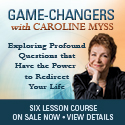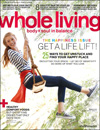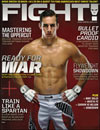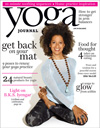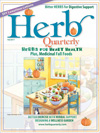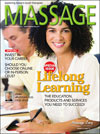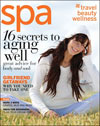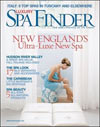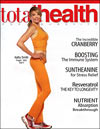Putative no more: Have scientists finally found the biofield?
Breaking news this week, in book form: scientists at the University of Arizona have measured not one but multiple human biofields. Some of the same scientists have also tested Reiki in the laboratory and found it has consistent, measurable effects in controlled studies, compared to "sham Reiki" and no treatment.
This news actually broke in August, with the publication of the book The Energy Healing Experiments by Gary E. Schwartz, Ph.D., with William L. Simon. But it broke quietly, even though the book came from a major publisher (an imprint of Simon and Schuster) and has a foreword by a former Surgeon General of the United States, not to mention advance praise from such respected integrative-health celebrities as Larry Dossey, M.D., and Kenneth R. Pelletier, Ph.D., M.D. As far as we can tell, it has yet to make the headlines beyond the one on the article you're reading right now.
Look up the authors online and you'll discover that their previous books include The G.O.D Experiments, The Afterlife Experiments (with Deepak Chopra, M.D.), and The Truth about Medium. You may also notice that some critics point out that Schwartz's work hasn't been published in peer-reviewed medical journals. Schwartz and Simon cover that point in this book and charge that medical journals have a bias against energy medicine, citing the controversial 1998 publication in the Journal of the American Medical Association of a fourth-grader's science project. Later found not to be up to adult scientific standards (details in the book), the nine-year-old girl's experiment claimed to debunk Therapeutic Touch, a form of energy medicine similar in some ways to Reiki. (The fourth-grader's study did make headlines, hundreds of which can still be found online today.)
And you'll notice that Schwartz is a Professor of Psychology, Medicine, Neurology, Psychiatry, and Surgery at the University of Arizona, and he got his Ph.D. from Harvard, so he's definitely got a solid footing in mainstream medicine even as he explores energy healing and other "woo-woo" subjects.
Actually, it was not "woo-woo" but a high-pitched "wee" sound that confirmed to Schwartz that a repurposed radio telescope had found a 12-gigahertz signal coming from his own body. At the other end of the sound spectrum, the extra-low-frequency magnetic fields -- 8 to 12 hertz -- his team discovered coming from the hands of healers in another experiment weren't audible, but registered clearly on a superconducting quantum interference device (SQUID). A less expensive, and less sensitive, portable digital magnetic-field-strength meter also detected changes in magnetic fields coming from the hands of healers, including Reiki practitioners.
Schwartz and his colleagues also experimented with Reiki on test subjects such as e. coli bacteria and laboratory rats. Presumably, neither would have any expectations about Reiki and would therefore not be subject to the placebo effect. The bacteria were subjected to the stress of heat, while noise was used to create stress in the rats. The Reiki-treated rats had significantly less microvascular leakage (a measure of stress) than those receiving no treatment or sham Reiki. In the e. coli experiments, the researchers found not only that Reiki could affect cells in test tubes, but that the less stressed the practitioner, the more effective the treatment. And the most successful Reiki practitioner in the e. coli study coincidentally turned out to be a full-time animal healer.
The work Schwartz and his colleagues have done so far still may not be enough to change science's longstanding assumptions about the biofield. That will take more studies, more time, and perhaps a change in the scientific culture. Another Arizona-based scientist, Paul Davies, Ph.D. of Arizona State University, challenges some of the cultural assumptions of science last week in a New York Times op-ed piece headlined "Taking Science on Faith."
Let's stick with the topic of science and Reiki as we move on to this week's Celeb-Reiki, a rocket scientist-turned-Reiki practitioner featured in today's edition of the Dayton Daily News in Ohio. "Rocket man tries new path in life" is the headline, and former Air Force rocket scientist Keith Longstreth reveals his plan to become a "Roving Reiki Master" traveling the countryside in a converted school bus. (Kudos to our reporter in Beavercreek, Ohio, for finding that news item.)
Meanwhile, back on Mt. Kurama, the legendary birthplace of Reiki, Special Correspondent Michelle Shinagawa checks in this week to tell us about the Flying Cloud Stone.
Update on a previous Celeb-Reiki: Mega Millions winner (and Reiki practitioner) Rev. "Bunky" Bartlett turned up in the Baltimore Sun again earlier this month to explain about his plans for a pagan seminary that won't be like Hogwarts.
Next week: Reiki, stress, and the holidays
Also in December: The Carnival is coming! On December 22, we'll close out the year by hosting the Carnival of Healing.











